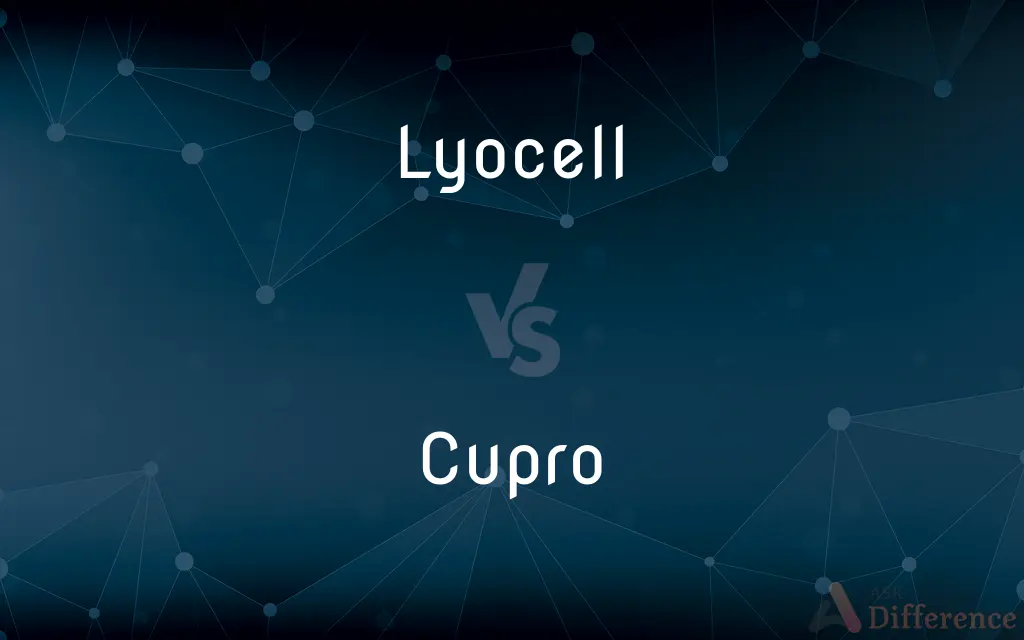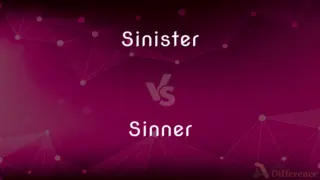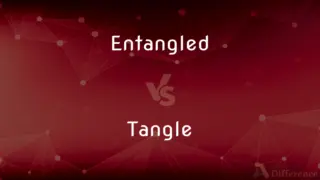Lyocell vs. Cupro — What's the Difference?
Edited by Tayyaba Rehman — By Urooj Arif — Updated on May 9, 2024
Lyocell is a semi-synthetic fabric made from wood pulp, known for its breathability and sustainability, while cupro is derived from cotton waste and valued for its silk-like feel and biodegradable nature.

Difference Between Lyocell and Cupro
Table of Contents
ADVERTISEMENT
Key Differences
Lyocell is produced from wood pulp, typically eucalyptus, using a closed-loop process that recycles solvents. It's breathable, biodegradable, and known for its moisture-wicking and durability. Cupro, derived from cotton linter (waste fibers), undergoes a similar closed-loop production, creating a fabric that mimics silk in softness and sheen.
Lyocell is highly breathable and moisture-wicking, making it ideal for activewear and summer clothing. Cupro, while also breathable, is softer and silkier, commonly used for luxury garments, linings, and delicate apparel.
Lyocell tends to have a slightly matte finish and drapes well, whereas cupro has a smooth, lustrous appearance, providing a more polished look.
Lyocell production is environmentally friendly, recycling solvents used in processing. Cupro also minimizes waste by utilizing cotton linters, which are often discarded.
Lyocell requires gentle care due to its absorbent nature, while cupro is prone to wrinkling and is often best dry-cleaned.
ADVERTISEMENT
Comparison Chart
Source Material
Wood pulp (eucalyptus, bamboo)
Cotton linter (waste fibers)
Texture
Smooth, matte finish
Soft, silk-like sheen
Environmental Impact
Closed-loop production, biodegradable
Cotton waste reuse, biodegradable
Common Use
Activewear, summer wear, home textiles
Luxury wear, linings, delicate garments
Care Instructions
Gentle machine wash, air dry
Often requires dry cleaning
Compare with Definitions
Lyocell
Sustainable production.
Lyocell is produced using environmentally friendly methods.
Cupro
Breathable.
Cupro lining allows the jacket to remain breathable.
Lyocell
Moisture-wicking.
These lyocell sheets keep me cool at night.
Cupro
Delicate care.
Cupro fabric usually benefits from dry cleaning.
Lyocell
Semi-synthetic fiber.
The dress was made from lyocell, giving it a soft feel.
Cupro
Cotton waste fiber.
Cupro is made from regenerated cotton waste.
Lyocell
Matte finish.
Lyocell fabric has a subtle matte texture.
Cupro
Silky texture.
The cupro blouse feels luxurious, like real silk.
Lyocell
Durability.
Activewear made from lyocell can withstand repeated washes.
Cupro
Wrinkle-prone.
Clothes made from cupro often require careful ironing.
Lyocell
Lyocell is a form of rayon. It consists of cellulose fibre, made from dissolving pulp and then reconstituting it by dry jet-wet spinning.
Cupro
Rayon made by the cuproammonium process
Lyocell
A semisynthetic fibre (and associated fabric) made from wood pulp
Common Curiosities
Is lyocell suitable for all seasons?
Yes, its breathability and moisture-wicking properties make it versatile.
Which fabric is better for sensitive skin?
Both are suitable, as they are breathable and soft.
Are lyocell and cupro considered luxury fabrics?
Cupro is more associated with luxury due to its silk-like feel, while lyocell is valued for its versatility.
Is lyocell fully biodegradable?
Yes, lyocell is biodegradable due to its cellulose origin.
How does cupro handle moisture compared to lyocell?
Cupro is breathable but less moisture-wicking than lyocell.
Is lyocell or cupro more suitable for athletic wear?
Lyocell is preferred due to its moisture-wicking properties.
Can lyocell be dyed easily?
Yes, it absorbs dyes well and maintains color vibrancy.
Does cupro wrinkle easily?
Yes, its delicate nature makes it prone to wrinkling.
Does lyocell shrink after washing?
It may shrink slightly, so gentle washing and air drying are recommended.
Is cupro easy to maintain?
It often requires dry cleaning due to its delicate nature.
Does cupro contain any wood pulp like lyocell?
No, cupro is derived entirely from cotton linter.
Can lyocell be tumble-dried?
It's best to air dry to avoid shrinkage.
Is cupro vegan-friendly?
Yes, as it's plant-based and does not involve animal products.
Is cupro commonly blended with other fibers?
Yes, it often blends with other fibers to enhance durability.
Which is more durable: lyocell or cupro?
Lyocell is generally more durable than cupro, especially for activewear.
Share Your Discovery

Previous Comparison
Sinister vs. Sinner
Next Comparison
Entangled vs. TangleAuthor Spotlight
Written by
Urooj ArifUrooj is a skilled content writer at Ask Difference, known for her exceptional ability to simplify complex topics into engaging and informative content. With a passion for research and a flair for clear, concise writing, she consistently delivers articles that resonate with our diverse audience.
Edited by
Tayyaba RehmanTayyaba Rehman is a distinguished writer, currently serving as a primary contributor to askdifference.com. As a researcher in semantics and etymology, Tayyaba's passion for the complexity of languages and their distinctions has found a perfect home on the platform. Tayyaba delves into the intricacies of language, distinguishing between commonly confused words and phrases, thereby providing clarity for readers worldwide.
















































